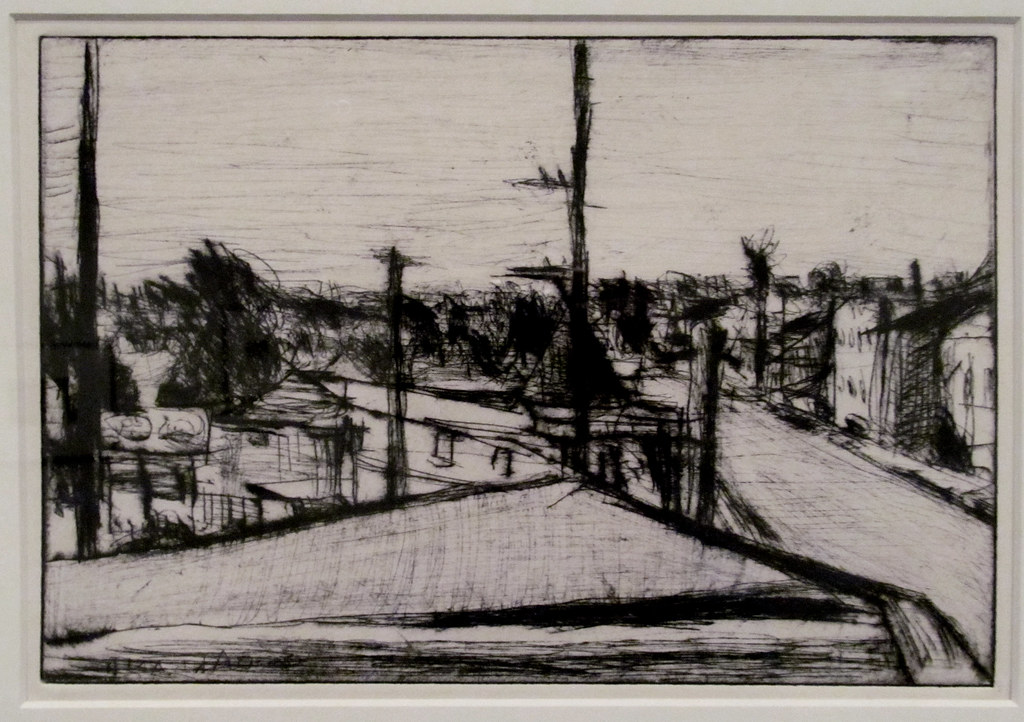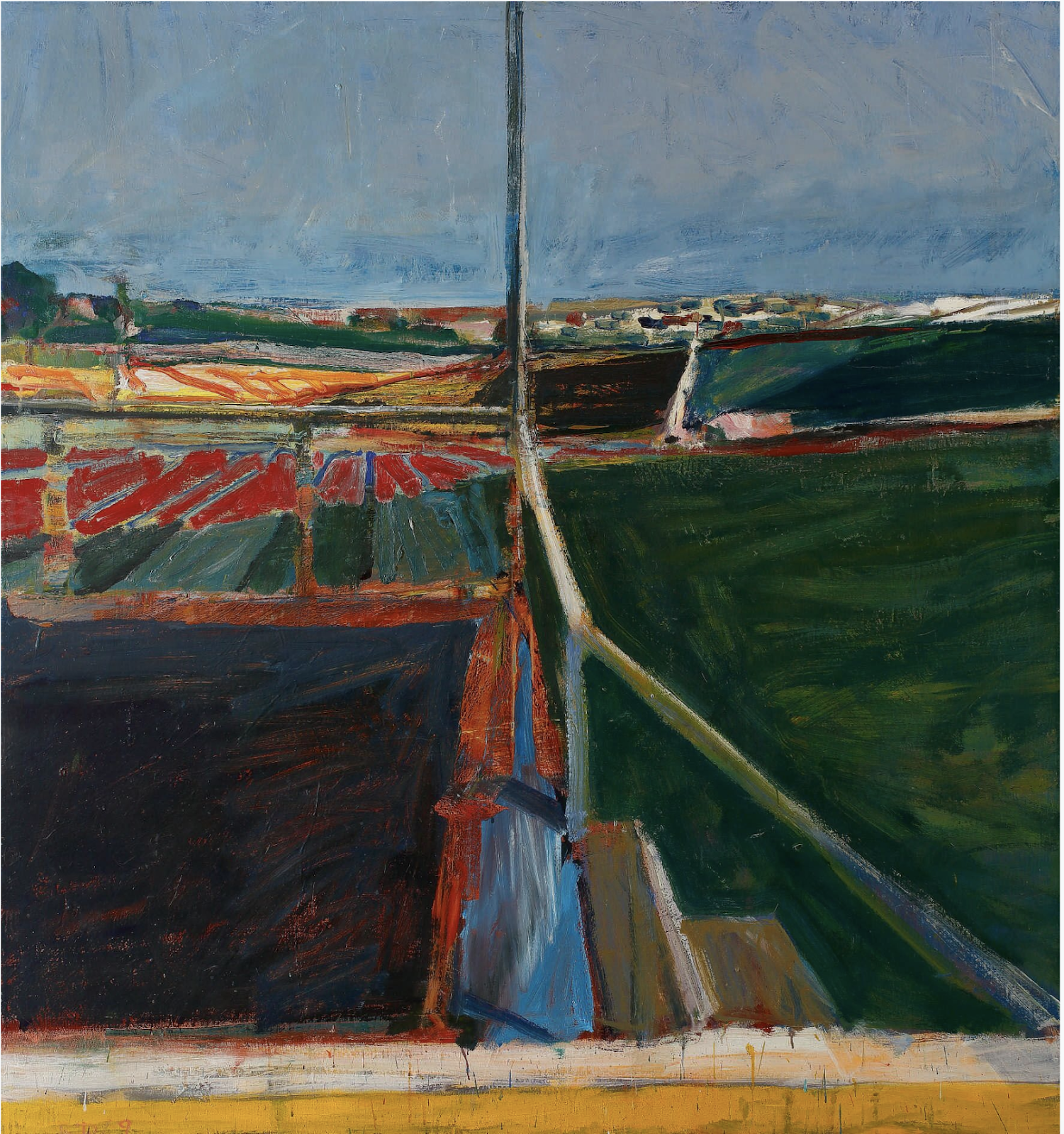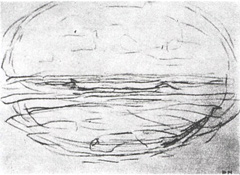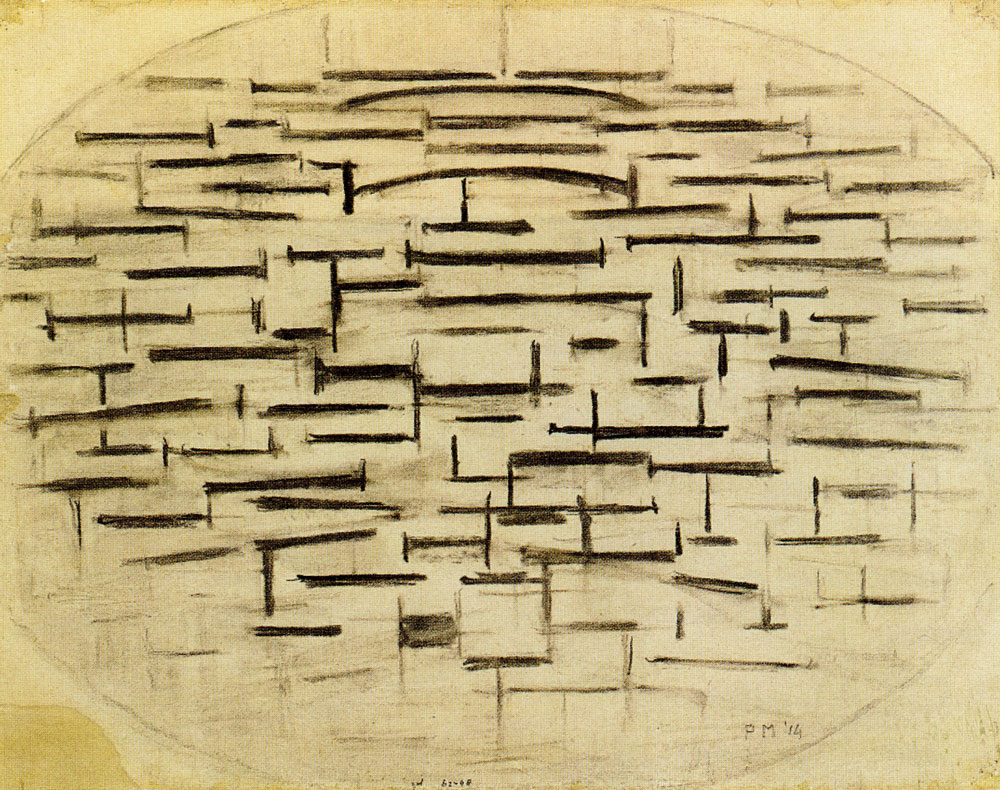Richard Diebenkorn
Contemporary landscape drawing as I have pointed out already, often involves artists embedding themselves into the various situations they find themselves in, however the tradition of 'composing' images is still with us and often landscape painters use drawing as a way to collect information that will allow them to go on and make paintings. However some of the images made are not 'studies' but are full-blown statements, made using drawing materials but made with an intensity and understanding of the materials being used, that ensures that the images as as powerful as any painting.
Richard Diebenkorn: Oakland cityscape; Drypoint
Richard Diebenkorn was a painter who was obsessed with the development of compositional ideas that would stabilise and give form to the chaos of the world. In order to do this he would be very careful and selective in his ideas generation, making several studies until he had an idea of the compositional dynamics of a painting.
Charcoal
Watercolour
Richard Diebenkorn
Diebenkorn's search for visual scaffolding, means that his images end up as abstractions of landscape that can almost appear to be non-figurative. He no doubt looked to Mondrian as a precursor, a painter that took the implications of abstraction as a form of reduction to its limits.
Lee Newman
Lee Newman's drawings are artworks in their own right. He treats charcoal in a very painterly way, the processes of erasure and re-application of the marks, being analogous to the laying down of paint and scraping it back off again. He is very concerned to recreate the space that he finds in different environments and he pushes and pulls darks against lights in order to stabilise and record his perceptual experiences.
Sangram Majumdar
Sangram Majumdar
Sangram Majumdar is another artist that states that observation is central to his practice. He seems to be always searching for simple forms that emerge from beneath the flow of looking. His strong grasp of Platonic solids giving structure to what could easily be drawings that are over obsessed with detail, the eyes dipping in and out of an act of looking that is preparing itself for painting.
Jan Knipe's drawings are also set in that cusp between drawing and painting. I particularly like her use of a strong vertical to stabilise the images. This is a very 'drawing' thing to do, the line as a powerful divide is central to the drawer's arsenal of compositional devices.
Adrian Ghenie: Study for Berlin Zoo 2 2009
Adrian Ghenie uses collage together with a restricted monochromatic paint language to stimulate his visual imagination. Again he is thinking about painting and composition, images such as the study for Berlin Zoo above, helping him invent his way towards a final painting.
Collage is a very good way of both simplifying form and adding another layer of interest into responses to landscape.
Mark Lewis
Mark Lewis
Mark Lewis uses paper pre-stained in a range of shades of grey. Having to cut and tear these out means that he is forced to simplify the forms he sees and in doing so he creates very dynamic compositions, often with irregular edges which can add to the overall impact of the image and make it more 'object' like. There is also a halfway house. As you make painterly and drawn responses to your landscape onto your paper surface, some will simply not work. Instead to throwing these away, you can recycle your own work by tearing it up and sticking it back down into the images you are developing. This fluid way of working helps develop new ideas for forms and frees you up from thinking too much about finish.
Lewis Noble
An artist like Lewis Noble makes sketchbooks full of these torn out and recomposed landscape 'notes' and these become very useful references for him when he is back in the studio and as a resource for finding fresh landscape images.
Lewis Noble explaining how he uses collage techniques
I know it is still February and therefore cold and wet, but those of you with an interest in landscape should still be able to go out and collect information, winter often providing much more of a clear view of the bones of a landscape, the green of spring is of course beautiful but 'what lies beneath' is the geology of rocks and landforms that support the vegetation and these structures are much easier to see in winter.
See also:



















Thanks for sharing these ideas about using marble in interior design.
ReplyDeleteIrish landscape photography
Ireland scenic views
Natural beauty of Ireland
Wild Atlantic Way
Cliffs of Moher landscape
Irish countryside vibes
Green landscapes of Ireland
Ireland hiking trails
Best landscape spots in Ireland
Emerald Isle nature
Thanks for sharing these ideas about using marble in interior design. Landscape design Switzerland
ReplyDeleteGarden landscaping Zurich
Outdoor living spaces Switzerland
Sustainable landscaping Geneva
Alpine garden design Switzerland
Hardscaping contractors Switzerland
Landscape architecture firms Switzerland
Natural stone landscaping Switzerland
Luxury outdoor renovation Switzerland
Green roof and terrace landscaping Switzerland
Thanks for sharing these ideas about using marble in interior design.landscape architecture
ReplyDeletealpine landscape
garden design Austria
stone paving
urban green spaces
sustainable landscaping
Thanks for sharing these ideas about using marble in interior design.
ReplyDeletelandscape design Germany
garden landscaping Berlin
outdoor living spaces Germany
landscape architecture Munich
sustainable landscaping Germany
modern garden ideas Germany
landscape contractors Germany
urban green spaces Germany
hardscape solutions Germany
landscape renovation Germany